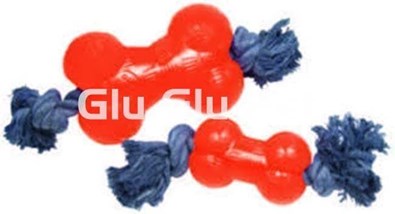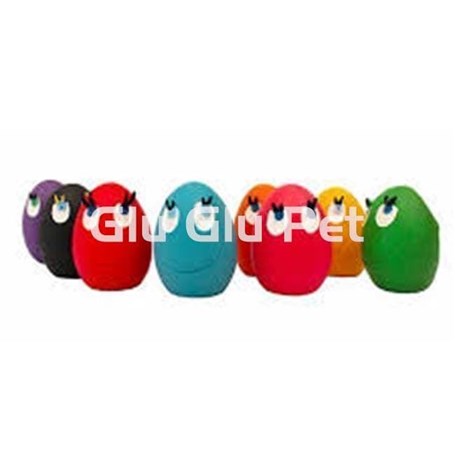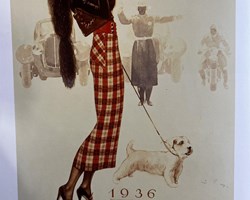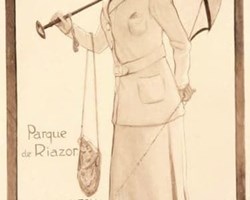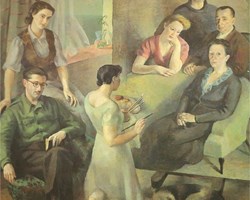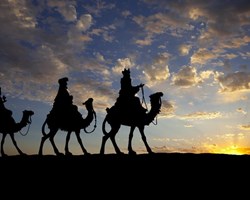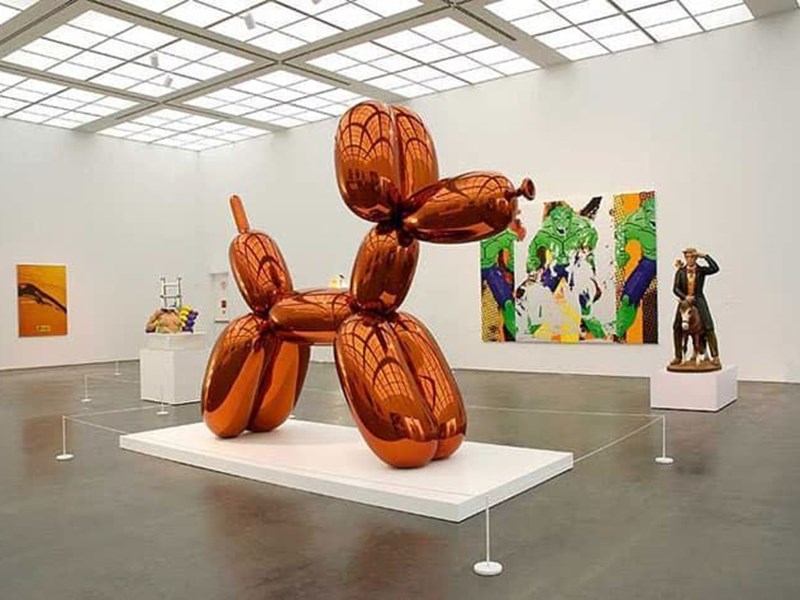
The dog has been, for thousands of years, an animal faithful to man.
The latest studies place the origin of the domesticated dog between 12,000 and 15,000 years ago.
Throughout history, a good way to represent this intimate relationship between dog and man has been art.
This is how Velázquez did it in “Las Meninas”:
Salomón was the name of the mastiff dog of the Infanta Margarita, who appears in this fragment of one of the masterpieces of the Sevillian genius that we have chosen to head this article.
Nicolasito Pertusato, another of the characters in the painting, seems to want to annoy him.
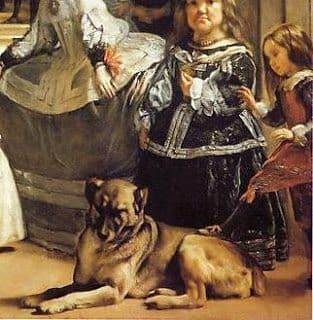
Although the dog does not flinch.
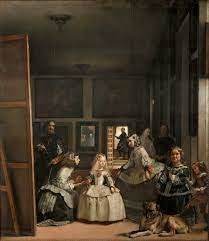
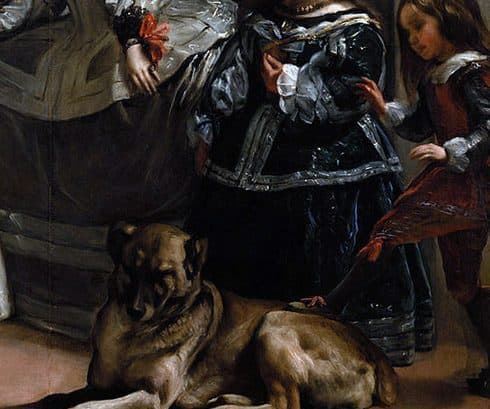
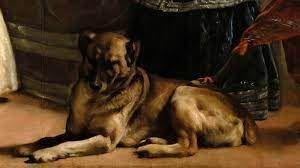
"True history of the dog Solomon" is a book by Miguel Ángel Fernández-Pacheco and Javier Serrano. He won the National Prize for Children's and Youth Literature in Spain in 2001.
The story of a man who became a dog for love. This album tells the story of a servant of Quevedo, who became a dog for the love of a lady. This dog is the one that appears in the painting "Las Meninas" by Velázquez. Quevedo lived in Campo de Montiel, south of Ciudad Real. With him lived a very graceful servant named Ginés Lucientes, who fell in love with a noble lady of very difficult access. He saw her very few times, but she didn't even know he existed.
One day, a fairy granted Ginés a wish. He asked him to turn him into the dog that always accompanied the lady, Solomon. The fairy told him that when he wanted to become a man again, he should recite a tongue twister from memory. Ginés learned it. After spending a few days in Solomon's body, he decided that it was time to become a man again, but... he didn't remember the tongue twister! So he stayed in the form of a dog. Some say that he finally recovered his body and ended his days with the lady. Others, that he died being a dog. So everyone think of the ending you prefer.
Source: casadellibro.com
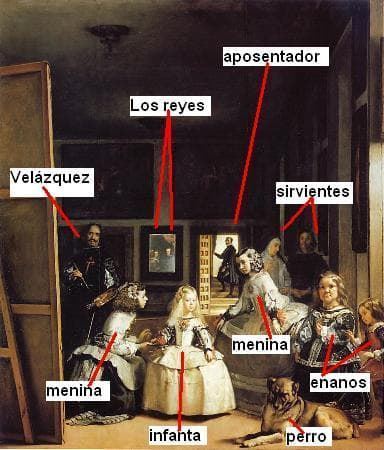
THE DOG IN PREHISTORIC ART:
The first artistic representations were in the Neolithic period, when a sedentary lifestyle was established and therefore the first civilizations.
The dog was used for work tasks such as: helping in hunting, guarding cattle, looking for bulbs and other food buried in the ground.
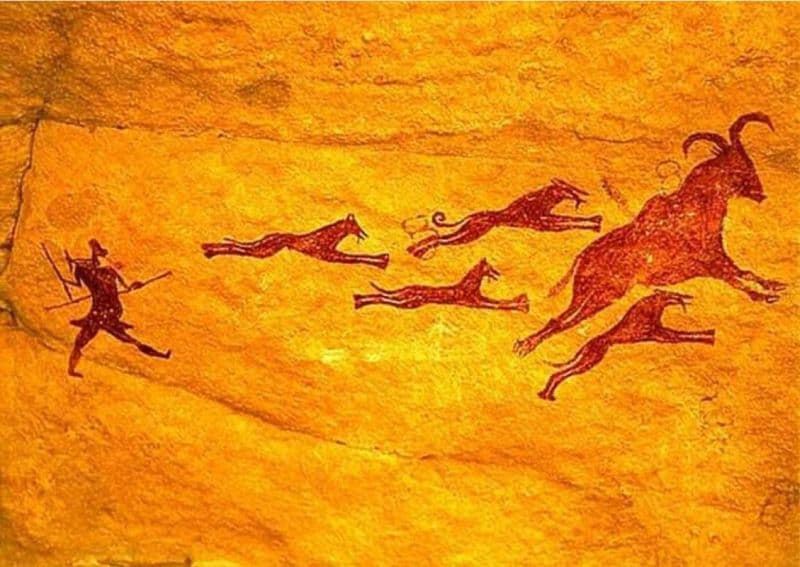
In this cave painting, the hunter is shown, helped by the dogs, chasing a large prey.
THE DOG IN CHRISTIAN ICONOGRAPHY:
Over time, the bond with the dog was maintained.
The function was not only for work but also for company.
In the following work, San Roque is seen with a dog, the famous San Roque dog that has given rise, among other things, to a popular tongue twister.
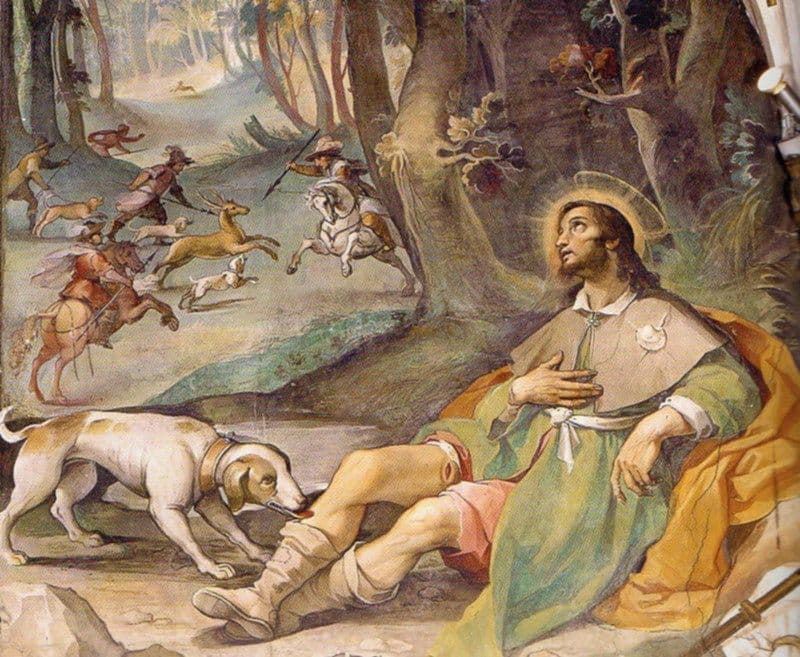
San Roque was born at the end of the 13th century and as an adult contracted the Black Death, which wreaked havoc throughout European society.
It is said that San Roque retired to a forest where he was attended by a dog belonging to a noble knight who brought him bread every day.
San Roque was one of the few that survived the plague.

THE DOG IN THE HISTORY OF THE RENAISSANCE:
At the end of the Middle Ages, already in the Renaissance, authors such as Botticelli dared to add images of dogs to their paintings, in this case in the painting "The Trials of Moses" (1481-1482).
In this detail of said work we can see a girl carrying a dog in her arms.
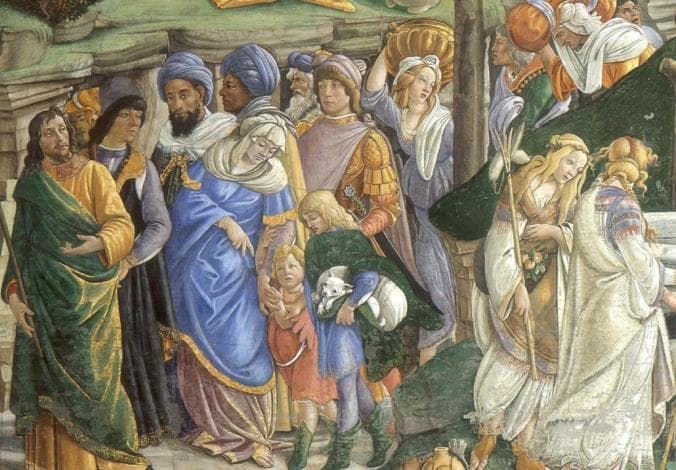
THE DOGS IN THE PAINTING OF THE MODERN AGE:
In the Modern Age, the figure of the dog became popular and having a hunting dog was already considered a representation of high social class.
In the following canvases painted by Goya, two children can be seen caressing a large dog in the work “Children with mastiffs” and Carlos III with his dog on a day of hunting in the painting entitled “The Hunter”.
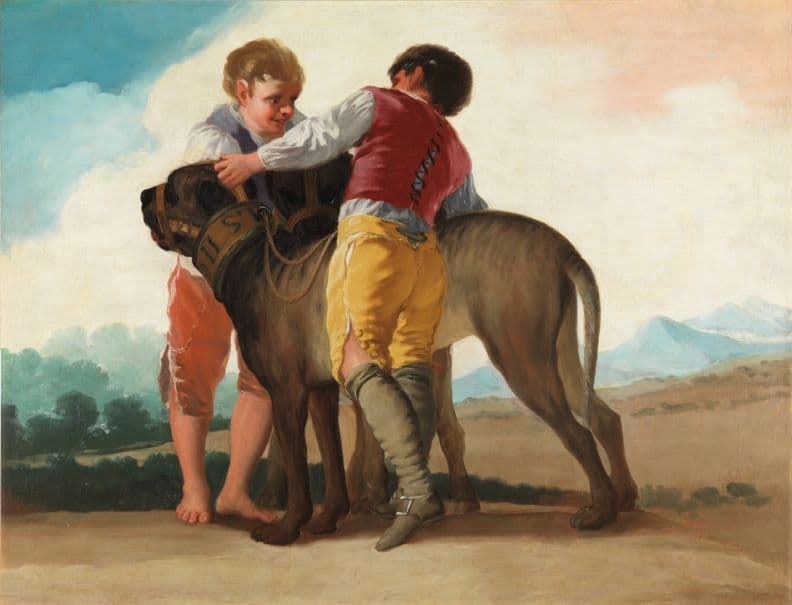
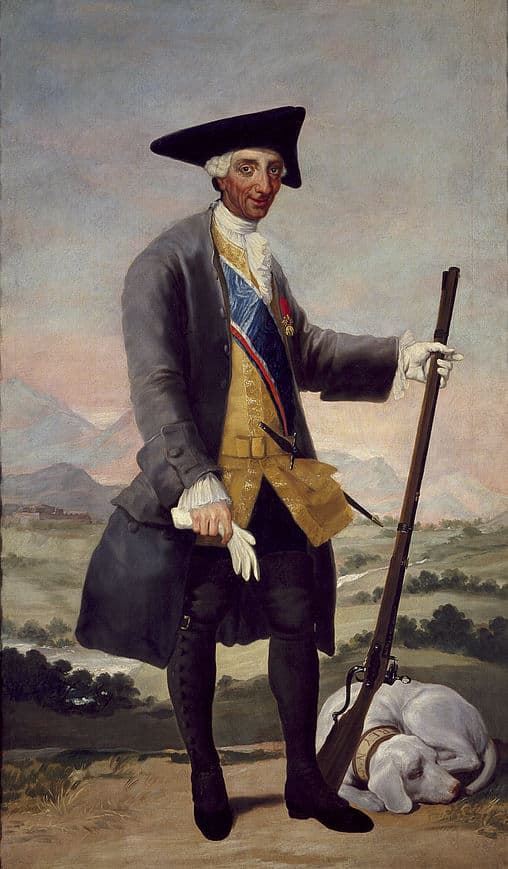
At the end of the 19th and 20th centuries, the presence of the dog on a canvas was not only distinctive of hunting aristocrats, but it began to be seen more with ordinary citizens.
The figure of hunting and cattle dog was diminishing in exchange for a companion figure until what we know today.
The breeds and the pedigree were consolidated in the middle of the 20th century and this is reflected in the last canvases that we are going to show:
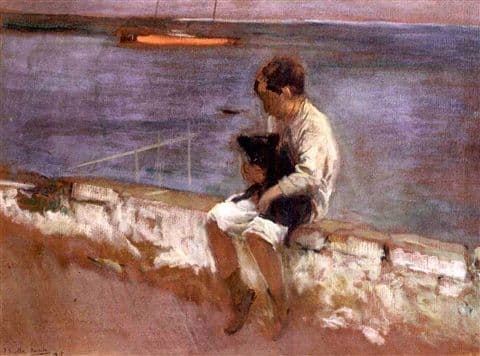
This canvas shows the author himself, Joaquín Sorolla, when he was a child with his dog by the sea.
In this other image you can see several dogs playing a game of cards.
Perhaps it is this cunning yet playful depiction of deception applied to man's best and most loyal friend that makes the painting so much fun.
Although the original was never for sale, it is believed to be worth millions of dollars.
The work is called "A friend in need" and was made by CM Coolige in 1903, it has been commented on in a previous Glu Glu Pet article.
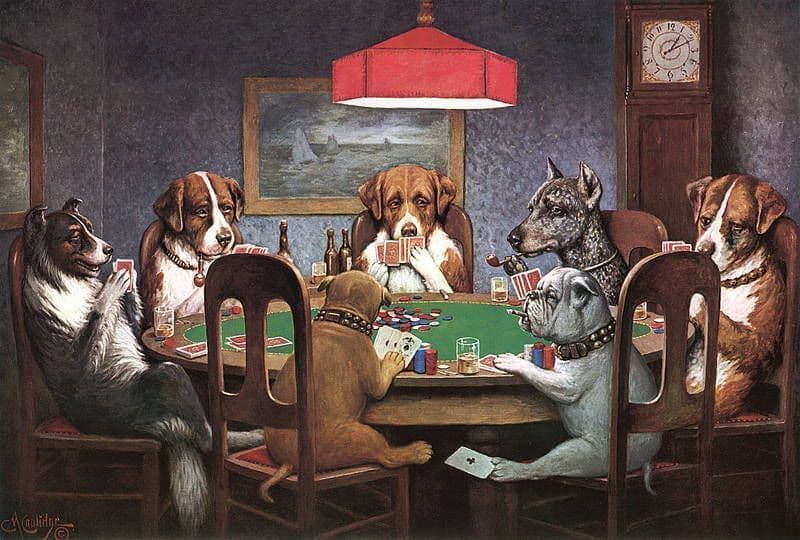
THE DOG IN CURRENT ART:
The last image that we are going to highlight is a work by the controversial Jeff Koons.
It represents a dog in an inflated balloon.
The work is called "Balloon Dog" and in 2013 the latter, the orange, was auctioned at Christie's in New York, exceeding 43 million euros, the highest figure ever paid for the work of a living artist.
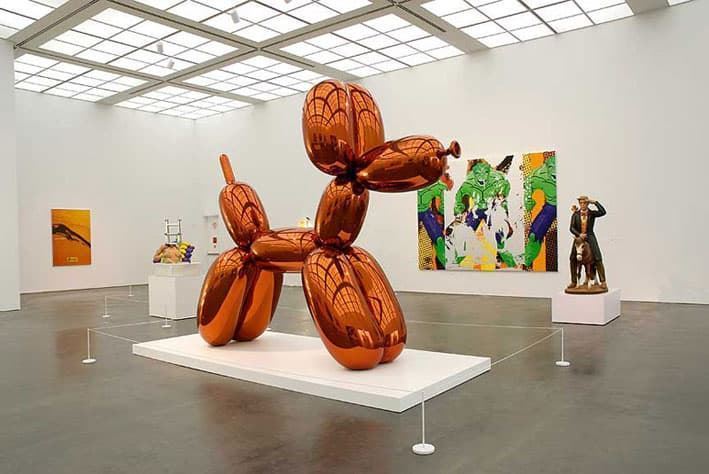
Articles that may interest you:
Glu Glu Pet articles you might be interested in:
- LATEX BIRD 19CM.
- TPR BONES.
- LATEX EGG FOR SMALL DOG.
- KONG AIR DOG BONE size M.
- KONG AIR DOG DONUT size M.
- KONG AIR DOG FOOTBALL size M.
- KONG CLASSIC RED.
- KONG EASY TREAT PUPPY PASTE FOR KONG.
- KONG ESAY TREAT PASTE FOR KONG TOYS.
- KONG EXTREME.
- KONG GOODIE BONE.
- KONG SQUEARKAIR TENNIS BALLS 6 UNITS.
- KONG SQUEAKAIR MEDIUM.
- TPR DOG BALL.
- Scented solid rubber dog balls.
